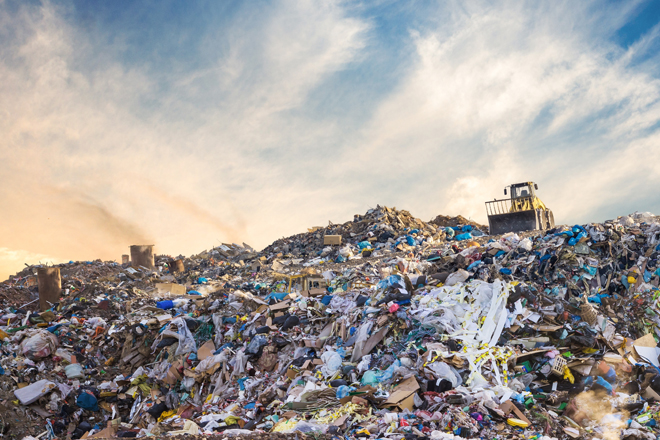Subscribe
Sign up for timely perspectives delivered to your inbox.
Hamish Chamberlayne, Head of Global Sustainable Equities, explains how the responsible use of plastics is an important consideration for evaluating the sustainability of a business.

Thus far, regulatory response has focused on single-use plastics and products deemed as unnecessary, such as microbeads, cotton buds, disposable cutlery, straws and coffee stirrers. However, other significant pollution sources remain unregulated.
We believe that responsible use is likely to have a much greater positive impact than the avoidance of all forms of plastic entirely; the challenge lies in assessing the balance between the benefits of using the material and the costs of designing it out entirely. Encouraging responsible use often requires assessment of an entire supply chain, taking into account factors such as resource efficiency, product longevity and the use of circular economy initiatives.
Leading companies are likely to maximise opportunity by collaborating across industries, working within the public and private sectors. Indicators to look for in leading companies can be broken down into three broad areas:
The level of voluntary disclosure by companies can be used as an indicator of potential resilience to consumer groups shifting their appetite away from plastic-heavy purchases. Proactive disclosure and target setting may also lower the risk of being subject to top down, prohibitive legislation. In best practice cases these targets are highly visible and embedded in company values. Integrated reporting with clear relevance to the impact, product or operations of the company should be taken with greater weight than the isolated publication of statistics.
Targeting an increase in the percentage of recycled content used by companies may be a greater driver for change than encouraging the production of recyclable items, potentially impacting practices further along supply chains by growing demand for recycled material. Although not yet universally possible, companies carrying out early research in materials’ use are likely to benefit. Types of plastic used will begin to narrow as recycling infrastructure develops, creating opportunities for leaders in the area. However, until the supply of recycled polymers has both increased and stabilised, overambitious companies may be likely to miss targets on the use of recycled content due to the availability of recycled material.

Policies that either integrate circular economy thinking into operations or encourage the designing out of the material altogether, indicate long-term thinking in this area. The early integration of circular economy models, such as take-back initiatives, reverse logistics and modular design has the potential for significant benefit through increased efficiency, industry recognition and first-mover advantage.
Opportunities exist owing to future increased demand for recycling facilities, new logistics solutions for circular economy or deposit-return initiatives, and new materials that will be required to replace single use plastics. As many of these developments span several industries, companies creating or joining collaborative initiatives are likely to excel, particularly those working vertically along value chains and investing in recyclable technology and infrastructure.
Those working with policymakers to influence consumer behaviour are likely to benefit from positive public image and potential government support, with programmes around improving recovery rates having the co-benefit of increasing the availability of recycled material.
Identifying the primary sources of environmental risks and opportunities is a complex and ongoing process. The full sustainability impact of plastic usage is a result of many interconnected – and often unclear – factors. For instance, food packaging has been targeted by consumer groups and regulators despite evidence that the packaging helps to deliver food safely, increase shelf life and reduce food waste. Similarly, the delivery of medicines, clean water, and sterilised products relies on plastic, as do numerous resource efficiency improvements across transport and logistics industries.
The relevance of plastic use varies greatly with company and industry, meaning that there is not yet one single solution or identifier for positive impact, investment risk or investment opportunity. We seek companies which are intentional, transparent and consistent in their approach – with regards to both products/services and operations – as we believe this provides the best assurance of its long-term trajectory of a business.
1 R. Geyer, J. R. Jambeck and K. L. Law, “Production, use, and fate of all plastics ever made” Science Advances, vol. 3, no. 7, 1 7 2017.
2 Plastic Soup Foundation, “The Worlds Population Consumes 1 Million Plastic Bottles Every Minute”, accessed 24 February 2022
3 World Wide Fund for Nature (WWF) Australia, “The lifecycle of plastics”, as at 2 July 2021, accessed 24 February 2022
4 UN Environment, “China’s trash ban lifts lid on global recycling woes but also offers opportunity”, as at 6 July 2018, accessed 24 February 2022
5 Bloomberg, “China Upended the Politics of Plastic and the World Is Still Reeling”, as at 21 January 2020, accessed 24 February 2022
6 Kevin Keane, BBC News, “Scotland ban announced for plastic cotton buds”, as at 11 January 2018, accessed 24 February 2022
7 UK Government press release, “World leading microbeads ban comes into force”, as at 19 June 2018, accessed 24 February 2022
8 Climate Action, “France ban plastic plates and cutlery”, as at 20 September 2016, accessed 24 February 2022
9 United Nations environment programme, “World leaders set sights on plastic pollution”, as at 16 February 2022, accessed 24 February 2022
10 National Geographic, “Fast facts about plastic pollution”, as at 20 December 2018, accessed 24 February 2022
11 European Environment Agency, “Plastic in textiles: towards a circular economy for synthetic textiles in Europe”, as at 17 September 2021, accessed 24 February 2022
12 J. Boucher and D. Friot, ICUN, “Primary microplastics in the oceans: A global evaluation of sources,” 2017.
13 United Nations Environment Programme, February 2022